| |
With more than 4 billion prescriptions written each year in our country, it's easy to understand how some of these medications end up in the wrong hands and are misused. When medication isn't taken as directed or is “saved for a rainy day,” it creates opportunity for misuse, which can be harmful to young people.
Misuse of medication, including both prescription and over-the-counter medicine, occurs when someone uses it in ways that aren't prescribed or directed. It can lead to serious, even deadly, consequences, especially when medications are taken in high doses or combined with other substances. For young people whose brains are still developing, risks can include damage to critical brain functions related to emotion, decision-making, memory, learning, attention and general mental health. For some, it can lead to addiction.
Most people who misuse prescription drugs are between the ages of 18 and 25. A national survey of high school students conducted in 2019 found that 1 in 7 students reported misusing prescription pain relievers (opioids) at least once in their lifetime.
Why Medication Gets Misused
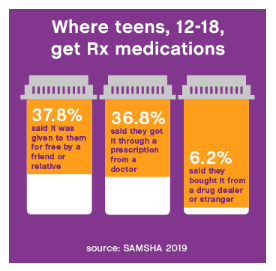 It's easy to believe that prescription medication is relatively safe. A health care provider prescribes them as medicine. We often see them in ads, leading people to think they must not be especially harmful. Yet certain prescribed medications are similar to illegal drugs in their chemical makeup. If misused, they can be quite dangerous. It's easy to believe that prescription medication is relatively safe. A health care provider prescribes them as medicine. We often see them in ads, leading people to think they must not be especially harmful. Yet certain prescribed medications are similar to illegal drugs in their chemical makeup. If misused, they can be quite dangerous.
Common reasons for misuse include:
Curiosity, fun or social enhancement
Some young people simply want to experience the effects of “getting high” or feeling more relaxed. They might misuse medications on their own or in social settings to ease social anxiety and be alert or aroused. Friends may pressure each other into trying a pill because “you'll like how it feels.” This experimentation with pills can be even more dangerous when combined with alcohol.
To enhance academic or athletic performance
Young people who misuse prescription stimulants may want to sharpen their attention or sustain a high level of arousal, alertness or attention. They believe drugs like Adderall will boost their academic or athletic performance. However, while stimulants may help in the short term, over time, they become less effective. A young person will need more and more of the drug to function normally. This is the definition of tolerance, which is a key symptom of addiction. Long-term use may actually lead to a decline in grades or sports performance.
To relieve mental health problems or stress
Some young people may misuse medications in an attempt to self-treat mental health issues like anxiety, depression or attention-deficit/hyperactivity disorder (ADHD) that are not adequately treated by a professional.
Numerous environmental factors shape a young person's beliefs and attitudes. These can contribute to whether they will misuse medications and to what extent and whether they will experience negative consequences. A child's risk increases if they have a family history of substance use or addiction, see parents or older siblings misuse medication or if there is easy access to medications in the home, at school or in the neighborhood.
Why Be Concerned
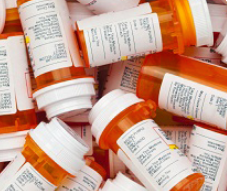 Certain prescription medications, especially those categorized as controlled substances by the U.S. Drug Enforcement Administration (DEA), are powerful drugs that have a risk of misuse and addiction. For example, opioid pain relievers are highly addictive and are very similar to heroin in their chemical makeup. Therefore, the U.S. Centers for Disease Control and Prevention (CDC) strongly recommends against prescribing them for long-term treatment of chronic pain and prescribing them very rarely for short-term pain. Certain prescription medications, especially those categorized as controlled substances by the U.S. Drug Enforcement Administration (DEA), are powerful drugs that have a risk of misuse and addiction. For example, opioid pain relievers are highly addictive and are very similar to heroin in their chemical makeup. Therefore, the U.S. Centers for Disease Control and Prevention (CDC) strongly recommends against prescribing them for long-term treatment of chronic pain and prescribing them very rarely for short-term pain.
Adolescents and young adults who use these drugs are at especially high risk of becoming addicted to them. The human brain does not fully develop until early adulthood, usually the mid- to late-twenties. During this time of rapid brain growth, exposure to drugs interferes with the brain's development. As a result, the lifetime risk of misusing substances and developing addiction increases. Beyond the risk of addiction, misusing prescribed medications can result in serious health consequences.
- Opioid pain relievers, like oxycodone and codeine, can cause fatigue and stomach problems. At higher doses, misuse can lead to breathing difficulties, overdose and death.
- Stimulants used to treat ADHD can lead to feelings of paranoia, high body temperature and rapid heartbeat.
- Depressants, like anti-anxiety or sleeping medications, can cause slurred speech, shallow breathing, sleepiness, confusion and lack of coordination. At higher doses, they can lead to overdose and death, especially when combined with alcohol.
Added risk of mixing prescription drugs with alcohol or other drugs
Misusing medications while also using alcohol or other drugs, whether accidentally or intentionally, can be dangerous and potentially deadly. Common effects include altered mental state, vomiting, blood pressure changes and heart damage. The combination of prescription drugs and alcohol can lead to stroke, heart attack, liver failure, internal bleeding, brain damage and other serious mental health consequences.
Potential for legal trouble
It's illegal to use a prescription medication in any way other than how a health care provider prescribed it. The same holds for use by anyone other than the individual to whom it was prescribed. If you offer your stimulant medication (e.g., for ADHD), anti-anxiety medication or pain reliever to a friend or family member who seems to be struggling with similar problems, it's against the law. It's illegal, too, if you take a prescribed drug offered by a friend or family member.
To be considered misuse, one does not have to be using the drug to get high or have fun. Even use for the designated medical purpose of the drug is considered misuse if it wasn't prescribed for the individual using the medication. While the specific legal offense depends on the type of drug misused, the nature of the activity and state-level statutes, penalties can include prison time and fines.
Counterfeit pills
Teens and young adults also need to know that many pills obtained illegally like Xanax and Oxycontin may be counterfeit. While they look like prescribed medications that could be obtained in a pharmacy, they are made in illegal labs. Some of these pills also contain fentanyl, which is an extremely potent opioid and the cause of many overdoses and deaths.
Intentional misuse of over-the-counter medication carries risk, too
It's likely that your household also contains over-the-counter (OTC) medications to treat headaches, indigestion, fever, allergies, constipation and more. When used as directed, these drugs are generally safe. Intentional misuse occurs when a medication is not taken as directed. This includes taking a higher quantity than instructed or using it for a nonmedical purpose.
In addition, some teens have been drawn to social media challenges to misuse OTC medications. One such challenge to take large quantities of Benadryl resulted in at least one teen's death, with many others hospitalized.
It's important to help your young person understand that just because these medications can be purchased without a prescription doesn't mean they are harmless.
Most Commonly Misused Medications
Opioid pain relievers (narcotics)
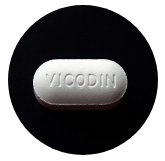 Examples include oxycodone (Oxycontin, Percocet) hydrocodone (Vicodin), fentanyl, tramadol Examples include oxycodone (Oxycontin, Percocet) hydrocodone (Vicodin), fentanyl, tramadol
Why misused: Calming, sedating effects; triggers the release of chemicals in the brain responsible for feelings of pleasure.
Effects and risks: Nausea, slowed breathing rate, drowsiness, confusion, poor coordination, constipation.
Similar to: Heroin
Stimulants
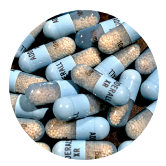 Examples include methylphenidate (Ritalin, Concerta), dextroamphetamine and amphetamine (Adderall XR, Mydayis), dextroamphetamine (Dexedrine) Examples include methylphenidate (Ritalin, Concerta), dextroamphetamine and amphetamine (Adderall XR, Mydayis), dextroamphetamine (Dexedrine)
Why misused: To focus attention, increase academic or athletic performance, lose weight, to “get high”.
Effects and risks: Heightened alertness, irregular heart rate, high blood pressure, high body temperature, reduced appetite, sleeplessness, anxiety, paranoia.
Similar to: Cocaine, Methamphetamine
Depressants (Benzodiazepines/Tranquilizers and Barbiturates/sedatives)
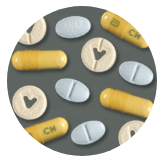 Examples include alprazolam (Xanax), diazepam (Valium), zolpidem (Ambien) Examples include alprazolam (Xanax), diazepam (Valium), zolpidem (Ambien)
Why misused: For feelings of calm, sleepiness or well-being; to get high, counterbalance or enhance effects of alcohol or other drugs.
Effects and risks: Drowsiness, confusion, unsteadiness, slurred speech, poor concentration, dizziness, memory problems, seizure.
Similar to: Alcohol
How To Protect Your ChildDespite what many parents believe and feel, you have tremendous influence over whether your children can access these medications and misuse them, as well as their interest in doing so. Most importantly, kids themselves say that their parents have the greatest influence over their attitudes and behaviors around substances.
Know the facts
You can help protect your children by knowing the risks and staying informed about the how, where and why young people get and misuse prescription drugs. Parents and caregivers are an essential buffer between youth and the influences that encourage them to misuse medications.
Be ready to answer your child's questions about medications honestly and accurately and in an age-appropriate way. You want them to see you as a good and trustworthy source of information. It is better for them to come to you with questions rather than get their information from less reliable sources like friends or social media.
Have a conversation
You don't have to sit down for the “drug talk,” but there are opportunities in even casual settings — while watching the news or a movie — where you can discuss medication misuse. This can be after dinner, before bed or on the way to or from extracurricular activities. Most importantly, be ready to listen to your child and understand their perspective.
It can help to start the conversation with open-ended questions about what they think about prescription or OTC medication. Try to avoid scare tactics or threats. Instead, explain that you genuinely care about their health. It's helpful to have conversations frequently, and if you can, before they gain access to medications. Remember to be compassionate, and clear about your expectations. To learn more about how to have an effective conversation with your child about drugs, see our guide and resources.
Set a good example
If you, a family member or anyone in your home has been prescribed potentially addictive medications, you can demonstrate proper use for your own safety. Set a good example for your child. Make sure to take doses as prescribed and safely dispose of expired or unwanted medication. Highlight and draw attention to these actions for children so they can learn by example.
Ask questions
Medication misuse can begin with a valid prescription from a trusted health care professional. Your child may think, “If my doctor prescribed this, it must be safe.” There are obviously times when such medications are needed, helpful and should be taken. Still, it's important to be fully aware of the risks of these medications. Learn how to minimize the chances that your child will misuse them.
Consider posing these questions to your child's health care provider:
- Is a prescription opioid necessary to treat their pain? Would alternatives like an over-the-counter pain reliever work? For chronic pain, can we explore other treatments such as physical therapy? Are there non-medication therapies to help treat my child's depression or anxiety disorder?
- How many pills are being prescribed and over how long a period? Is it necessary to prescribe this amount of pills?
- What are the risks of misuse of this drug?
- What are the potential interactions between this medication and other medications? Between this and alcohol or other substances they are using?
- Should my child be screened for substance use disorder before you prescribe this medication? If not, why not?
- Should they be screened for common risk factors for prescription drug misuse, including co-occurring mental health disorders such as depression or ADHD, as well as a family history of addiction or a recent trauma. If not, why not?
If an opioid, stimulant or depressant is prescribed to your child
Due to the high risk of misuse and addiction, keep all prescribed medications out of children's sight and reach in a locked cabinet. Once the period to take the medication is complete, safely dispose of any unused pills. Do not keep prescription medications until their expiration date or “just in case” you need them in the future.
Parents or adult caregivers should handle the medication, counting the pills in the bottle to be sure they are being taken as prescribed. Clearly document when the prescription was filled and when a refill will be needed. Ask your child about any missing medication. Communicate openly with them about the risks of misuse, and be very clear that the medication is not to be shared with others. Finally, watch for changes in your child's symptoms and be alert to any signs that your child might be growing dependent on the medication.
If your child has been prescribed an opioid pain medication (e.g., Tramadol, Vicodin) be sure to have naloxone on hand. Known by the brand name Narcan, it can reverse an overdose and save a life.
Signs of misuse & how to address
It's important to be aware of any signs that your child could be misusing medication. Physical signs of misuse include dizziness, confusion, nausea, constipation, slowed breathing and slurred speech. Changes in behavior and mood include:
- Excessive mood swings or hostility
- Acting unusually energetic or lethargic
- Significant changes in sleep habits
- Poor decision-making
- Requesting early refills or claiming to have lost prescriptions in order to get them rewritten
- Seeking out prescriptions from multiple doctors
- Selling medications or prescriptions
If you see that your child's substance use affects their health, relationships, grades or everyday life, you may need to seek professional help. Even if they don't misuse substances frequently, aim to address it. Any substance use or misuse during youth poses a significant health and safety risk and increases the likelihood of addiction. If there is a history of addiction in your family, discuss this risk with your child, as you would any family disease, and explain why they are at heightened risk of addiction.
Take a health, not a punitive, approach
Medication misuse is primarily a health issue, not a discipline or behavior problem. Reach out to your child's doctor or a health care professional as soon as possible to ensure your child's safety. Be sure that they do a thorough examination of the extent of your child's substance use, mental and physical health and personal, medical and family history.
Depending on your child's needs, different interventions and potential treatment options are available.
- Our online and text-messaging programs can help you manage your child's prescription drug misuse.
- Whenever possible, ask your child's physician about options to address use.
- In addition to psychotherapy, there are highly effective medications approved for the treatment of opioid use disorder.
Go easy on yourself
Parents are up against a lot when trying to prevent youth substance use of any kind, including medication misuse. This includes peer pressure, media influences, academic stress and young people's natural tendency to take risks. With patience, love and the right interventions, you can help them understand the dangers associated with prescription drug misuse, prevent them from developing a problem and encourage them to make healthier choices.
Youth interest in substance use, including the misuse of prescription and OTC medication, will continue to change with the times. The one thing that will remain constant is the need for information and support when raising a teen or young adult. Families are the most important and most powerful influence in a child's life. We are here to help you along the way.
|
|